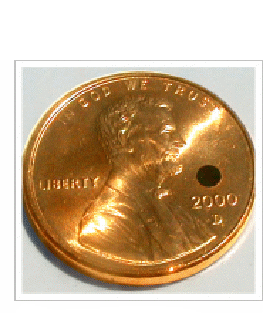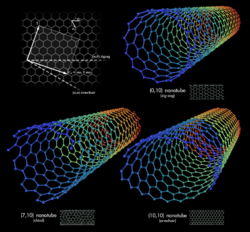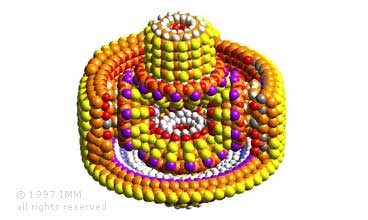The Basics:
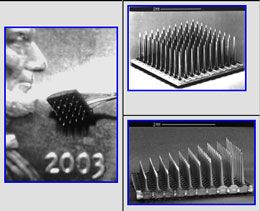
Neural microchip implantations exist at the ambitious forefront of humanity’s increasing dependence on technology. This union of neurons and microchips represents not only a tangible way for those with some form of sensory deprivation to expand their experience of the world; it opens the door for brain-computer interfaces with the potential to uncover the mysteries of the brain and greatly improve brain functioning.
Scientists involved with Neural Microchip Implantation seek to make direct connections with certain neurons in the brain using microchips programmed to communicate through the neurons’ language of electronic impulses. The microchips, often composed of silicon and arranged in an array of hundreds of hair-like electrode projections, take up no more space than a baby aspirin. This pursuit necessarily brings together computer scientists, mathematicians, engineers, neurobiologists, and psychologists.
The Procedures:
Neural microchip implants vary in design, function, and complexity. In the case of cochlear implants, up to 24 electrodes bypass damaged or destroyed inner ear hair cells, to send electrical messages to the scala tympani and then on to the brain1. Rather than making sounds louder or more audible like a hearing aid, a cochlear implant picks up sounds with a tiny external microphone that sits behind the ear, translates the sounds into electrical impulses, and then directly communicates with nerves in the inner ear; allowing the individual to hear sounds that they otherwise never would have experienced.
Just as hearing can be partially restored with cochlear implants, eyesight can become possible for individuals that undergo retinal microchip surgery to mediate debilitations from retinis pigmentosa2. In this operation, a tiny retina microchip is implanted underneath the retina. The microchip’s thousands of solar cells convert the light passing through the pupil into an electrical signal similar to those produced by healthy retinal photoreceptor cells. The microchip then communicates the electronic signal to the surviving cells that connect the eye to the brain. With the artificial microchip replacing a damaged retinal link, vision is restored.
Neural microchips have also been used to record neural impulses for application in patients with paralysis. The company Cyberkinetics, in association with Brown U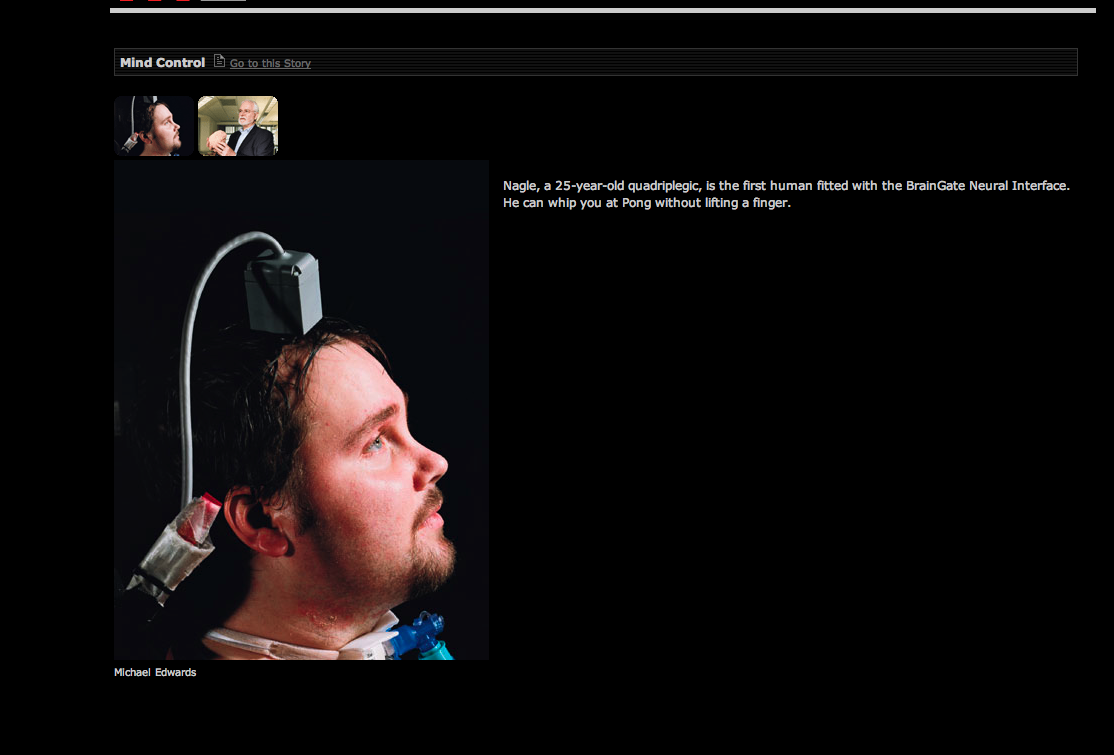
Finally, the most ambitious application for neural microchips entails replacing large, functional collections of neurons with a microchip composed of thousands of artificial neurons that can both receive and transmit electric signals with the same alacrity of biological neurons. The challenge in this situation includes the development of thousands of electronic relay units that are sensitive to both the spatial and temporal patterns of electronic signals coming from the biological neurons. Additionally the physical composition of the microchip must attract the connecting biological neurons and have the integrity to remain networked in the brain for long periods of time. The challenge falls into the hands of Ed Berger and his colleagues at USCwho are working to replace portions of the hippocampus3, and teams of researchers at the University of Washington, who have experienced considerable success with functioning microchips in the primate brain4.
Relationship to Terasem:
Retinal implant on a penny
http://www.imminst.org/film.php
The human brain is massively parallel. That is, neuronal signals traverse billions of channels simultaneously. However, the human neuron transmits information relatively slowly. Compared to a computer chip, the neuron gets slower every day. The biological brain also succumbs to debilitating diseases such as Alzheimers, and even chronic stress can decrease the size of the hippocampus and lead to poor retention of new information. The possibility of combining the massive parallelism of the biological brain, with the speed and durability of microchips opens up a new landscape for humanity. As research progresses, neural microchips could be used to record brain system functions with unprecedented detail, exponentially speed up human thought and insight, repair damaged or diseased neurons, connect wirelessly to a computer for effortless control of computer systems, access the massive stores of information in the internet instantly, and communicate with neural microchips in other individuals.
Neural microchip implantation has the potential to ease human suffering, extend human lifespan, vastly expand intellectual capacity, and facilitate the pursuit of Cyberconsciousness; all of primary interest for the Terasem Movement Foundation.
References and further reading:
Berger, USC https://web.archive.org/web/20160727010813/https://www.usc.edu/uscnews/stories/8470.html
Neural Engineering lab, http://dailyuw.com/archive/2007/01/19/imported/uw-developed-neural-implant-success#.Uebw7xagjqI
Cochlear implants: http://www.entnet.org/healthinfo/ears/cochlear-implant.cfm#CP_JUMP_67671
Matthew Nagle’s story: http://www.wireheading.com/misc/implant.html
Primate implant: http://thedaily.washington.edu/article/2007/1/19/uwdevelopedNeuralImplantASuccess
Personality Capture
The Basics:
The pursuit of digital personality capture was born in 1945, when Vannevar Bush, the scientist and director of the US Office of Research and Development at the time, proposed an all inclusive, personal information system1. His ambition at the time was for individuals to record extensive periods of their normal life with available technology, so that future individuals may gain access and command over the “inherited knowledge of the ages.”

Unlike in the past, where biographers, cameras, and video cameras may have only been available to a privileged few, personality capture today is available to the masses. While many personal archiving websites enable an individual to store vast quantities of information for future generations, the most ambitious and ultimate goal of personality capture is for this data transfer to reach the sufficient level of fidelity where our expanding knowledge of the brain, combined with artificial intelligence technology, will allow us to organize personal information into a workable system representing the true essence of personality.
The Procedures:
Personality capture consists of defining applicable personality information, developing spaces and avenues for the transfer of information, and creating a system of organization for this information. The possibility then exists to allow the captured personality to interact with and adapt to its environment by reestablishing the individual mind in its full complexity using future technology.
The APA identifies personality traits as “enduring patterns of perceiving, relating to, and thinking about the environment and oneself that are exhibited in a wide range of social and personal contexts.”2 While personalities certainly seem unique to the individual, the foundation of the personality rests on universal common ground. Universal emotions and facial expressions, Jungian archetypes, and Richard Dawkin’s memes provide conceptual reference points for the individual to navigate opinions, beliefs, and behaviors. Personality Capture seeks to use surveys to identify the universals most relevant to an individual, and then, with information about unique personal memories, capture a truly unique and essential combination.
Techniques for capturing the universal values and perceptions specific to an individual include the Bainbridge Surveys.3 These massive online surveys, supported by the National Geographic Society, identify widely endorsed beliefs and perceptions that then serve as the subject matter for individual questionnaires used in Personality Capture. Additionally, the Implicit Association Test proves a powerful way to eliminate the social desirability bias that occurs when questioned individuals, even when answers are anonymous, bias their answers to appear more acceptable.
C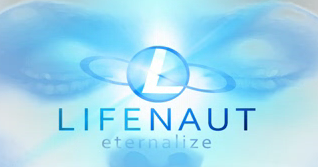
As technological advancements improve the fidelity of uploaded perceptions, attitudes, beliefs, mannerisms, recollections, feelings, and values, advances in the intelligent organization and synthesis of this information may begin to enable personality capture as a vehicle to prevent informational death4.
Relationship to Terasem:
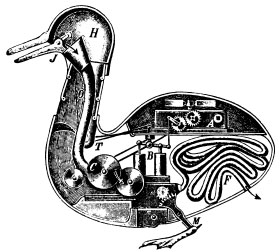
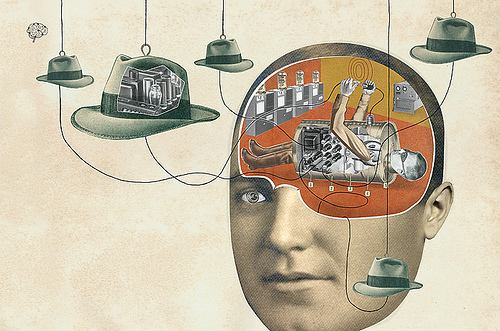
Terasem seeks and supports cutting-edge intelligent speech and avatar technology in addition to non-invasive neural scan technology. These technologies are essential for advancing upload fidelity and information organization to propel personality capture to the stage where future technology will be capable of digitally reconstructing an individual’s entire consciousness. Terasem and the personality capture movement at large hope to make personality capture a fluid, natural, and interesting part of everyday life.
References and further reading:
http://www.terasemjournals.org/PC0104/bainbridge_01a.html
https://implicit.harvard.edu/implicit/demo/
http://research.microsoft.com/barc/mediapresence/MyLifeBits.aspx
Nanotechnology
The Basics:
Carbon nanotube
The power of nanotechnology originates from the ability to manufacture, observe, and manipulate at a scale of 1-100 nanometers, allowing facility and access to engineering in the molecular world. A nanometer is 10-9 meters or one billionth of a meter.
Although today’s nanotechnology (“near-term nanotech”) affects a range of consumer products, the future of nanotechnology1 (“advanced nanotech”) could catalyze major societal changes, provided its potential dangers are sufficiently mitigated. Important nanotechnology possibilities include: nanomachines that travel inside all parts of the human body to record data and repair damage, nanoproducts that detect and destroy pollution particles, and diverse consumer, industrial, and space products of extremely high quality and low expense.
There is an enormous amount of interest surrounding nanotech partly because the change seems inevitable. Moore’s law predicts that by the year 2015 technology companies will need to be working at the nanoscale to stay competitive.2 Precisely how this momentous shift to the nanoscale will unfold however, remains controversial and somewhat uncertain. One thing is for sure: the influence of nanotechnology in medicine, robotics, computer processing, and environmental science will prove to be nothing less than revolutionary.
The Procedures:
Researcher Dr. Ralph Merkle provides an solid introduction to the core concepts of nanotechnology at www.zyvex.com/nano/. He explains the potential of advanced nanotech by reminding us that if we rearrange atoms precisely we can turn a piece of coal into a diamond (which has already been done on the nanoscale), or sand atoms and other trace elements into a computer chip. However, current mass manufacturing methods are for the most part analogous to wearing boxing gloves while trying to construct products out of Legos. Nanotechnology allows us to take off the boxing gloves.
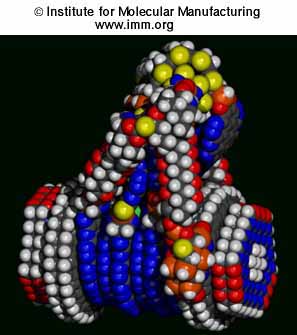
The theory of positional assemblydescribes the act of assembling products atom by atom. The process allows for unprecedented anatomic accuracy, capable of making, among other things, computers with vastly greater processing power and efficiency at lower costs. Current physical laws do not theoretically rule out this manipulation at the atomic level and researchers around the world are engaged in a pursuit to increasingly control and manipulate individual atoms. Although generally theoretical and time-consuming, techniques to bind single atoms using a scanning tunneling microscope have been successful3 and components of advanced nanotechnology have been created, including simple molecular gears and levers.4
The benefits of technology aren’t all speculation. In the field of nanomedicine Rutledge Ellis-Behnke at MIT has dramatically demonstrated how self-replicating nano-fibers and scaffolds can interact with neurons to facilitate the re-growth of a rodent optic nerve and allow the restoration of sight!5–6 In another, equally dramatic experiment, Ellis-Behnke and his teem applied a liquid peptide substance to the open wounds of smalls rodents and found that the rapid formation of a nanoscale protective barrier stopped bleeding within 10 seconds of application and—after the wound healed—biodegraded harmlessly!7
Massive technological breakthroughs only occur when costs descend as productivity increases. For nanotechnology to make a serious mark on our lives and culture, it must operate with massive parallelism: vast quantities of tiny nanomachines working simultaneously to assemble themselves into larger products, which then assemble into even larger products. This bottom up, self-assembly process (https://web.archive.org/web/20161229231442/http://www.foresight.org/nanofactory.mov)once realized will provide the key to the nanotech revolution.
Implications for Terasem:
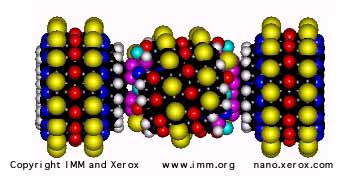
Importantly, Terasem’s mission only proceeds on a geoethical path. Advanced nanotechnology’s application to medicine and weaponry has the potential to destabilize world powers and create a devastating arms race. Terasem intends to provide guidance and expertise through their pursuit of cyberconsciousness via nanotechnology so this powerful tool becomes available not irresponsibly or solely to wealthy individuals or wealthy countries, but responsibly, to all of humanity.
Sources and further reading:
http://www.foresight.org/nano/index.html
https://web.archive.org/web/20161229231442/http://www.foresight.org/nanofactory.mov
http://www.npr.org/templates/story/story.php?storyId=12487042
http://bionano.rutgers.edu/or.html
http://web.mit.edu/newsoffice/2006/brainfix.html
http://www.eurekalert.org/pub_releases/2006-10/miot-mms100406.php
http://www.pnas.org/cgi/content/abstract/103/13/5054
http://www.nano.gov/html/facts/home_facts.html
http://unithertechnologyconference.com/conferenceagenda.php
1 http://www.foresight.org/nano/index.html

